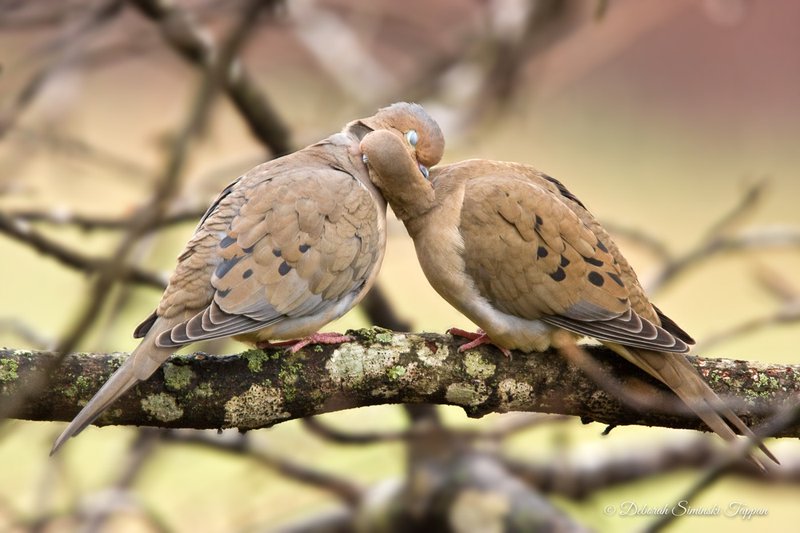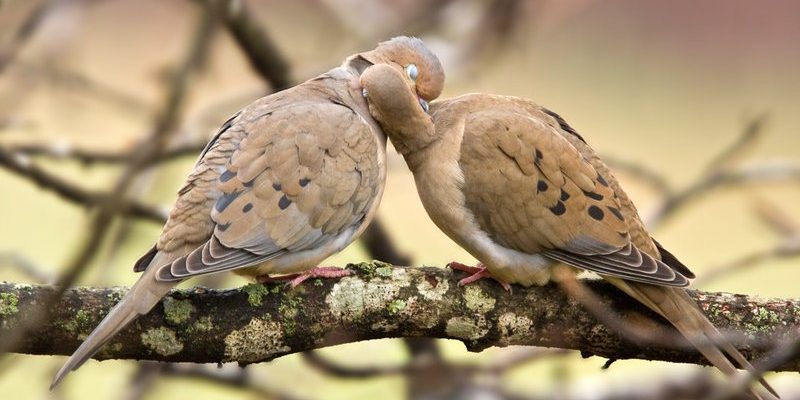
Mourning doves are known for their unique cooing calls and gentle nature. These birds are widespread across North America, often spotted in gardens, parks, and backyards. Their soft grayish-brown feathers and delicate frame make them easy to recognize. But what really grabs your attention is their fascinating courtship rituals. In this article, we’ll dive into how these lovely doves express attraction, mate, and raise their young, all while keeping it simple and easy to understand.
The Sounds of Courtship
Let’s start with the sound. It’s hard to miss the mournful cooing of these doves, especially during the breeding season. Their calls aren’t just random noises—they play a crucial role in courtship. The males produce a series of soft coos that serve as a serenade, a way to attract females. You might say it’s their version of sending flowers!
In addition to their cooing, males also perform a courtship display that involves puffing up their chests and bowing. This is like putting on their best outfit and strutting their stuff. The complete performance catches the eyes of potential mates, showcasing their fitness and availability. So, when you hear those sweet coos echoing in the air, know that a romantic story might be unfolding right before your eyes!
Nesting Together
Once a male has successfully wooed a female, the next step is finding a suitable nesting site. Mourning doves prefer to build their nests in sheltered areas such as tree branches, shrubs, or even on ledges. It’s like looking for the perfect spot for a picnic—you want a cozy, protected place to spend time together.
Both the male and female contribute to building the nest, which is often a simple structure made of twigs, grass, and leaves. This teamwork is essential for creating a secure environment for their future eggs. You might be thinking, “Why do they work together?” Well, in the bird world, cooperation often leads to stronger bonds and a better chance of raising healthy chicks.
Building a Life Together
After establishing a nest, mourning doves typically lay two eggs. This might sound small, but it’s perfect for their lifestyle. The eggs are often a pale white or cream color, blending in nicely with their surroundings. This camouflage is essential because it helps protect the eggs from predators.
Here’s where it gets interesting—the parents share the responsibility of incubating the eggs. For about two weeks, they take turns keeping the eggs warm and safe. It’s a bit like tag-teaming during a movie marathon, ensuring that neither of them misses out on the best bits. Once the eggs hatch, both parents continue to care for the chicks, feeding them a special substance called “pigeon milk.” This nutritious fluid is produced in their crops and helps the young ones grow strong and healthy.
Understanding their Behavior
You might wonder why mourning doves choose such a simple nest-building strategy. In the wild, being low-key can be a massive advantage. Their nests aren’t elaborate, which means they can build them quickly and keep moving. This adaptability helps them avoid predators and thrive in various environments.
Moreover, their gentle, non-aggressive nature allows mourning doves to coexist peacefully with other species. They aren’t territorial like some birds, which means you’ll often see them flitting about in groups. This friendly disposition can make it easier to spot them foraging together for seeds on the ground or perched side by side on a fence.
The Role of the Male
In the courting phase, the male mourning dove takes center stage. He not only sings and displays but also defends his potential mate from rivals. Think of him as the chivalrous knight, ensuring that the lady he’s interested in is protected. This behavior showcases his fitness and willingness to provide.
Once the female lays her eggs, the male’s role continues. While both parents share duties, the male often takes on more responsibility by staying close to the nest, watching for danger. This protective behavior strengthens their bond and increases the chances of their chicks’ survival.
The Symbolism of Mourning Doves
Mourning doves are often seen as symbols of peace and love. Their soft cooing sounds can evoke a sense of calm, reminding us of life’s simple pleasures. In many cultures, these birds are associated with deep emotions—like love, loss, and spirituality.
When witnessing their courtship and nurturing behavior, it’s easy to see why people resonate with them. These birds teach us about connection, patience, and the importance of nurturing relationships. Watching mourning doves can be a gentle reminder to appreciate the bonds we create in our lives.
Conservation and Respect
Sadly, like many bird species, mourning doves face threats from habitat loss and climate change. If you spot them in your backyard, you might wonder how to help. Creating a welcoming environment with native plants can support their habitat. Offering feeding stations with seeds can also provide extra nutrition during tough times.
Respecting their space is essential too. If you see a nest, try to keep a safe distance. Disturbing nesting birds can lead to abandonment or increased vulnerability to predators. By being mindful of the mourning dove’s needs, you can enjoy their courtship and parenting rituals while contributing to their conservation.
In a world where we often rush, these gentle birds remind us to slow down and appreciate the little things. Their courtship and mating rituals, while simple, offer profound lessons about love, care, and the beauty of life. So next time you hear that soft cooing, take a moment to enjoy the sweet serenade of the mourning dove!

